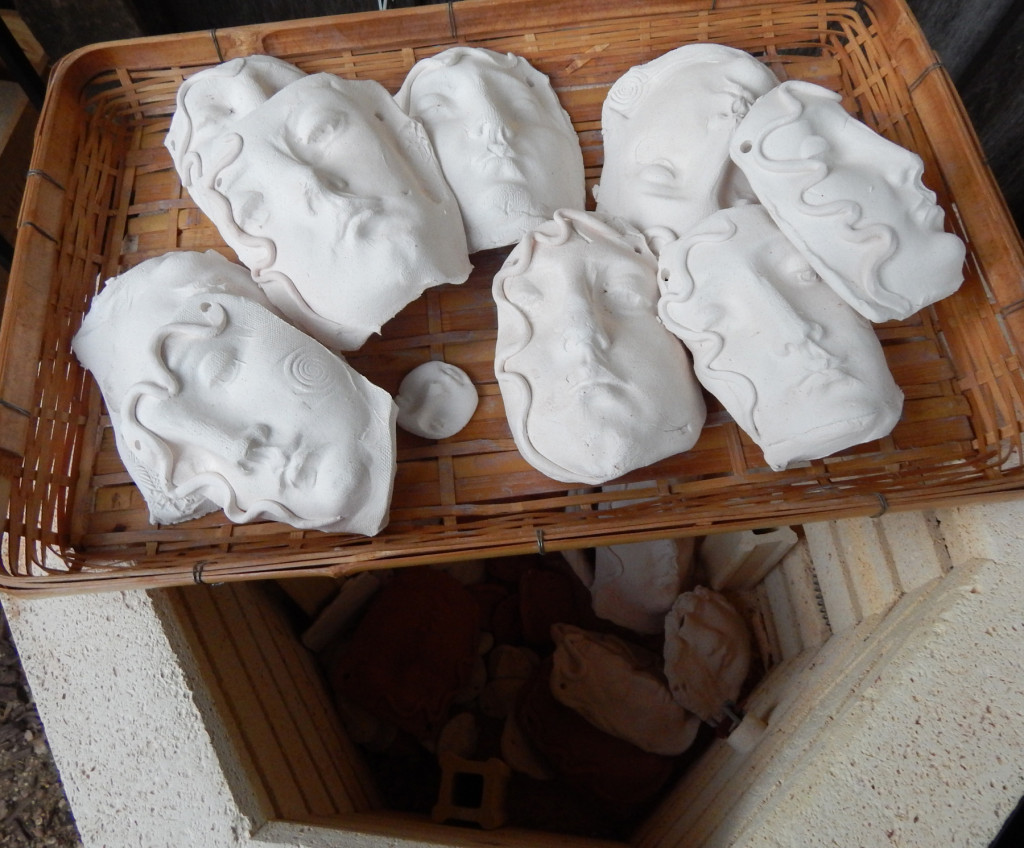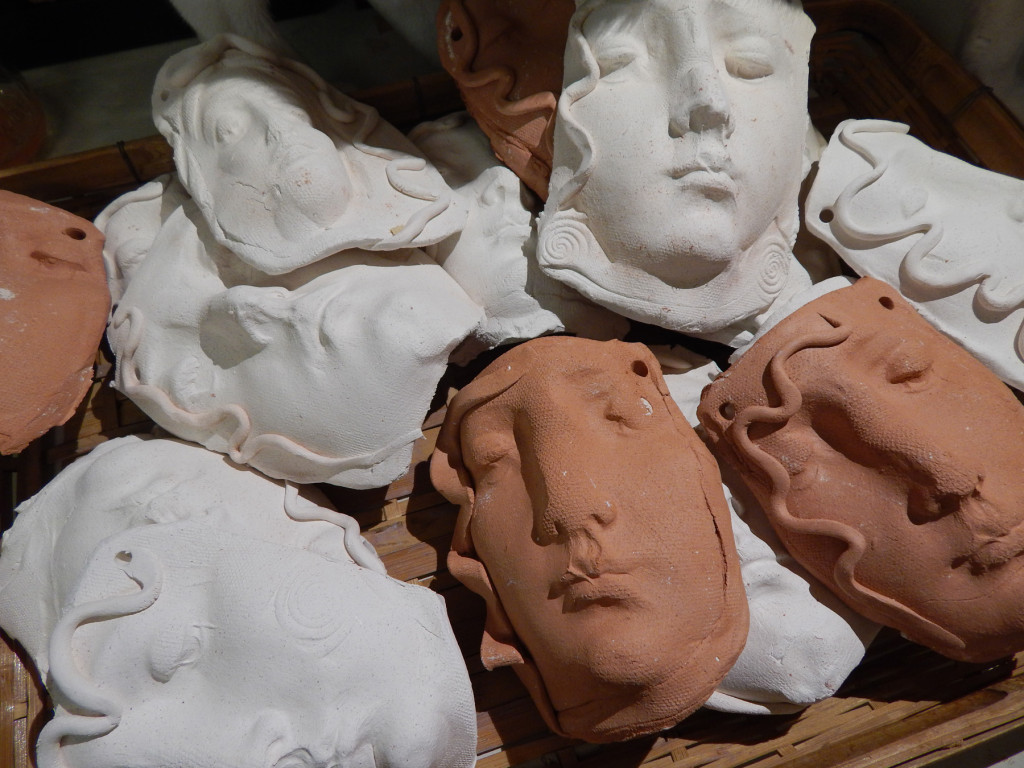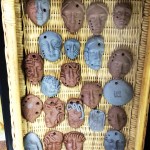

Last Friday, we got to participate in an amazing experience at Andy and Virginia Bally’s Studio near Canyon Lake. We had talked about planning a pottery pit fire for several months, and thanks to the Ballys’ hard work, it actually happened!
A pit fire is the oldest known method of firing pottery, dating back to 29,000 BC. It works as a kiln using a hole in the ground as insulation and fuel to reach temperatures around 2000 degrees farenheit.
British potter Jane White says, “The process of pit firing has endless possibilities, the pieces seem to have been created by nature itself, by the organic material, and the fire, which transforms the surface of the clay into a myriad of different patterns and colours, and each piece that is unearthed from the ashes is totally unique.”
A motley crew of potters and friends gathered outside the Bally Studio to watch the spectacle.

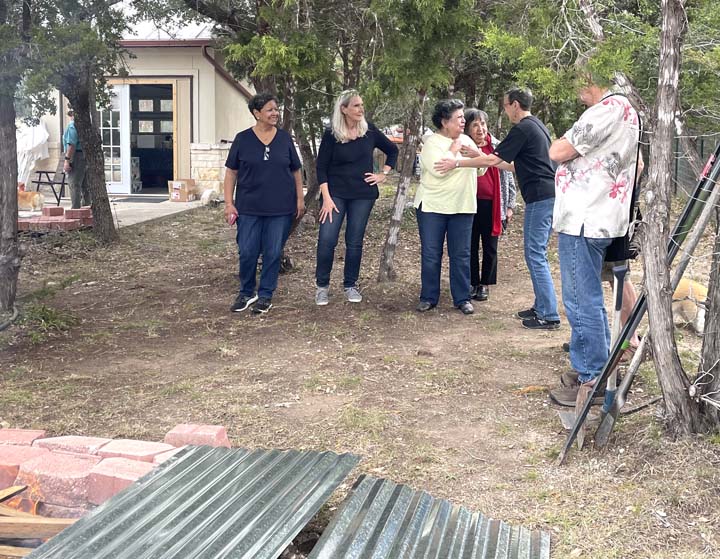
The pit was impressive. It was almost two feet deep and covered on the bottom with a deep layer of sawdust.
Here, I’m taking a photo of just the first third of the pit as it is being loaded with clay objects. The pieces are covered in all sorts of crazy, experimental stuff, including tamale shucks.
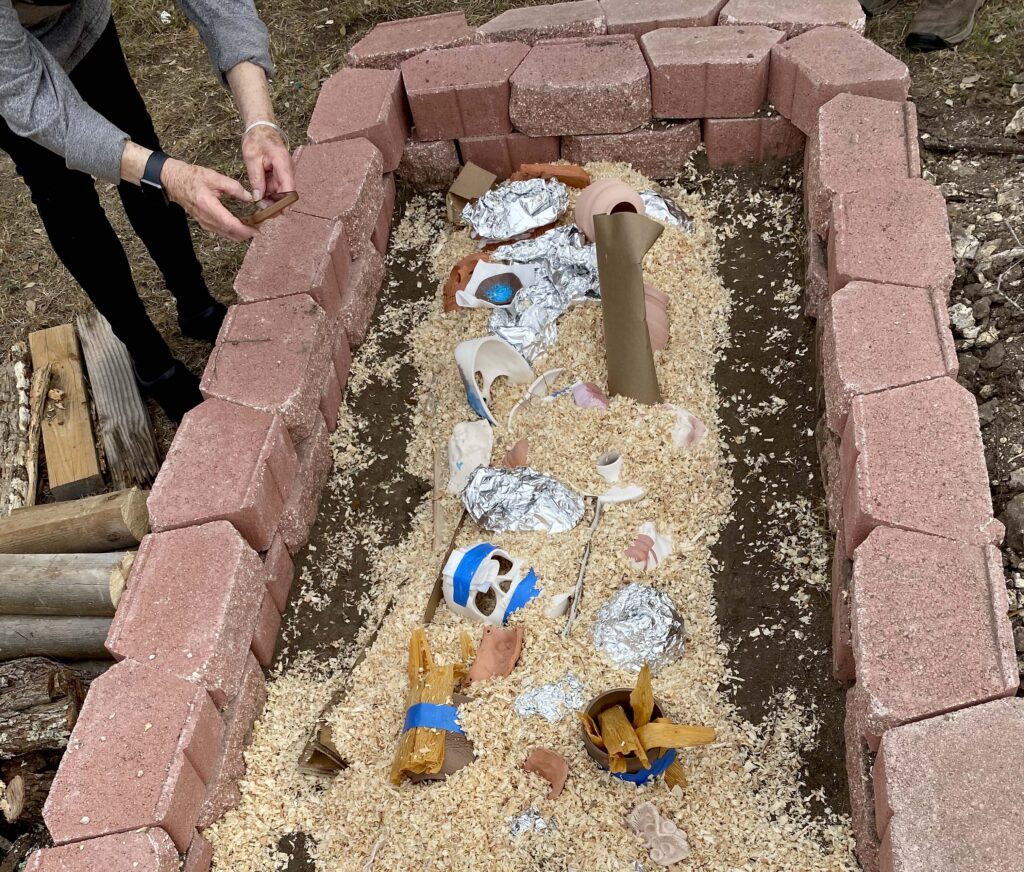
We also experimented with different colorants and chemicals on the surface of our bisque clay before adding them to the pit.Here, Julie and I are painting on Mason Stains (powdered pigments made of a combination of oxides and frits) and spraying on various chemicals including insect repellent and organic weed killer (!) to see how they would react with the flames.

Everyone kept a close eye on the fire – Andy was the Fire Pit Master and added oak in a steady, slow controlled process.

There is something about a communal fire that is exciting and sort of ancient. And we were all anxious to see how our clay would turn out, even though we knew it would take several days to cool and we wouldn’t get to see the results any time soon.

When the flames died down after several hours, the pit was covered with metal to keep in the heat and allow the pieces to cool slowly.

 There was so much to learn and to experience. We all took lots of pictures. After Andy and Virginia opened the pit two days later, they pulled the pots from the ashes and cleaned them. Then they sent photos of our work.
There was so much to learn and to experience. We all took lots of pictures. After Andy and Virginia opened the pit two days later, they pulled the pots from the ashes and cleaned them. Then they sent photos of our work.


I had fired some face shards in the pit, thinking they would come out looking like ancient relics, and the did! Here are several of my pieces.

The face on the bottom left had Mason Stain applied before firing, and the face on the bottom right has traces of smoke “clouds.” All of us wish we had taken better notes so we could duplicate the results next time!
You can see the whole process and many more of the pieces in the video below.
VIDEO: A PIT FIRING AT BALLY STUDIOS
There is also a You tube video of a Masterclass in Pit Firing by Jane White at this link. You’ll learn more about the process and be amazed by the results.
Jane White’s Masterclass Video on Pit Firing
No matter what our age or circumstances, we can resolve to keep on learning new things in the New Year. Participating in the Pit Fire experiment reminded me that creative learning and seeking out new experiences makes life rich and meaningful. It connects us to our past and makes us more resilient for the future.
Wishing you a wonderful Christmas-time and looking forward to being with you in 2022!
♥Lyn


































